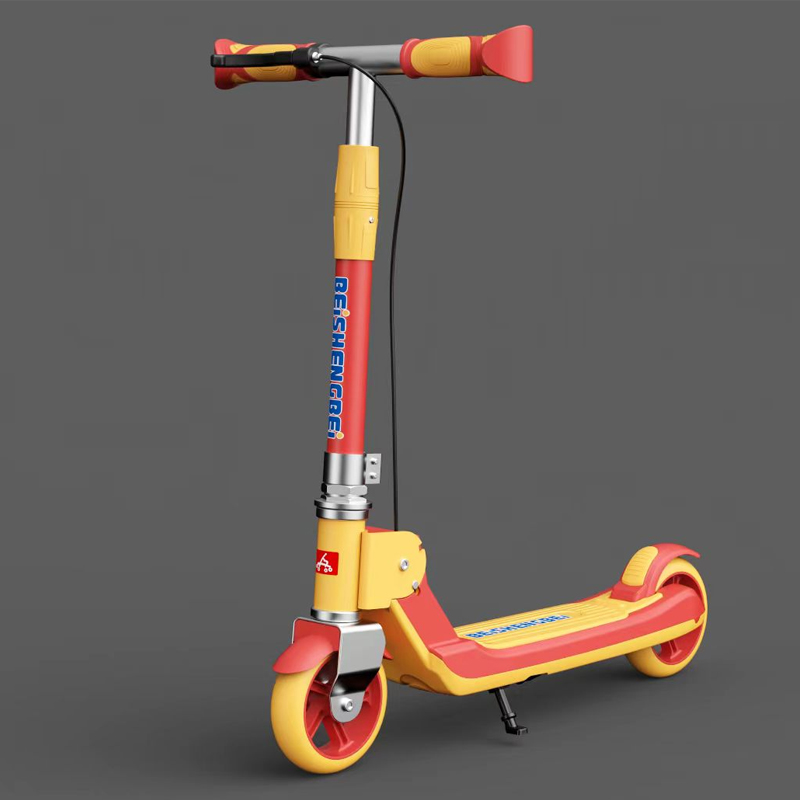The Future of Electric Scooters Revolutionizing Urban Mobility
As urban areas become increasingly congested, the need for efficient and sustainable modes of transportation has never been more pressing. Electric scooters (e-scooters) have emerged as a practical and eco-friendly solution, transforming how people navigate cities. This article explores the benefits, challenges, and future potential of electric scooters in urban mobility.
The Rise of Electric Scooters
Electric scooters gained popularity in the late 2010s, fueled by the rise of sharing services. Companies like Bird, Lime, and Spin introduced dockless e-scooter rentals, allowing users to pick up and drop off scooters at their convenience. This innovative model appealed to millennials and urban dwellers seeking quick and hassle-free ways to navigate congested streets.
E-scooters offer several advantages over traditional transportation methods. They are compact, nimble, and can easily maneuver through traffic. Additionally, they produce zero emissions, contributing to cleaner air in urban environments. As cities grapple with pollution and climate change, e-scooters represent a sustainable alternative to gas-guzzling cars.
Impact on Urban Mobility
E-scooters have significantly changed the landscape of urban mobility. They provide an alternative for short trips where public transportation may be inconvenient or unavailable. By integrating e-scooters into existing public transport networks, cities can create a more seamless travel experience. For instance, commuters can use an e-scooter to travel from their home to a train station, reducing reliance on personal vehicles.
Moreover, e-scooters offer a cost-effective transportation option. The fare structure of many e-scooter companies is affordable, often cheaper than taxi or rideshare services. This democratization of transportation access benefits people across various socio-economic backgrounds, enabling more individuals to travel efficiently within urban settings.
Challenges and Concerns
electric sciiters

Despite their many benefits, e-scooters face a variety of challenges. One significant issue is safety. Accidents involving e-scooters have raised concerns about rider and pedestrian safety. Many riders do not wear helmets, and collisions can result in serious injuries. Municipalities are grappling with how to regulate e-scooter usage to ensure safety without stifling innovation.
Another challenge is the clutter caused by parked e-scooters. In some cities, improperly parked scooters obstruct sidewalks, posing hazards to pedestrians, particularly those with disabilities. To address this, cities are implementing regulations and creating designated parking areas for e-scooters, promoting responsible usage.
Additionally, the environmental impact of e-scooter production and disposal cannot be overlooked. While e-scooters themselves are environmentally friendly, the materials used in manufacturing and the energy consumption for charging need to be factored into their overall sustainability. Companies must prioritize responsible sourcing and recycling programs to mitigate this impact.
The Future of E-Scooters
Looking ahead, the future of electric scooters appears bright. Technological advancements promise enhanced battery life, increased safety features, and more efficient charging mechanisms. For instance, solar-powered e-scooters could further improve the sustainability of this mode of transport.
Moreover, the integration of e-scooters with smart city initiatives is gaining traction. Cities are incorporating data analytics to monitor e-scooter usage patterns, helping to optimize the deployment of scooters. Such initiatives will lead to more strategic planning of transportation infrastructure to accommodate e-scooters alongside buses, bicycles, and pedestrian pathways.
As cities continue to invest in green infrastructure, e-scooters will likely play a pivotal role in the transition toward sustainable urban mobility. Policymakers, e-scooter companies, and communities must collaborate to forge a balanced approach that prioritizes safety, accessibility, and environmental responsibility.
Conclusion
In summary, electric scooters represent a transformative shift in urban mobility, offering an efficient, affordable, and sustainable transportation alternative. While they present challenges, proactive measures can mitigate these concerns, paving the way for a future where e-scooters coexist harmoniously with other transportation modes. As cities adapt to the demands of a growing population, the rise of electric scooters heralds a new era of urban mobility, one that is cleaner, smarter, and more accessible.
-

 Scoot&RideKids Child Kick Push Scooter 3 Wheels with LED Flashing Tilt Lean Boys Girls Scooter
Scoot&RideKids Child Kick Push Scooter 3 Wheels with LED Flashing Tilt Lean Boys Girls Scooter




- 4
$33.17 -

 Scoot&RideKids Scooter Child Kick Flashing LED Light Up 3 Wheel Push Adjustable Folding 3
Scoot&RideKids Scooter Child Kick Flashing LED Light Up 3 Wheel Push Adjustable Folding 3- 0
$25.52 -

 Scoot&RideKids Scooter Child Kick Flashing LED Light Up 3 Wheel Push Adjustable Folding 2
Scoot&RideKids Scooter Child Kick Flashing LED Light Up 3 Wheel Push Adjustable Folding 2- 0
$33.17 -

 Scoot&RideKids Scooter Teens Foldable Kick Push Scooter Adjustable Height Safe 2 Wheels
Scoot&RideKids Scooter Teens Foldable Kick Push Scooter Adjustable Height Safe 2 Wheels




- 4
$49.99
Meet our partners and discover what powers their creativity!
When you register for a Lohas scooter, you will receive a 10% discount on your first order and can be notified of sales, new product launches and other offers in advance.









